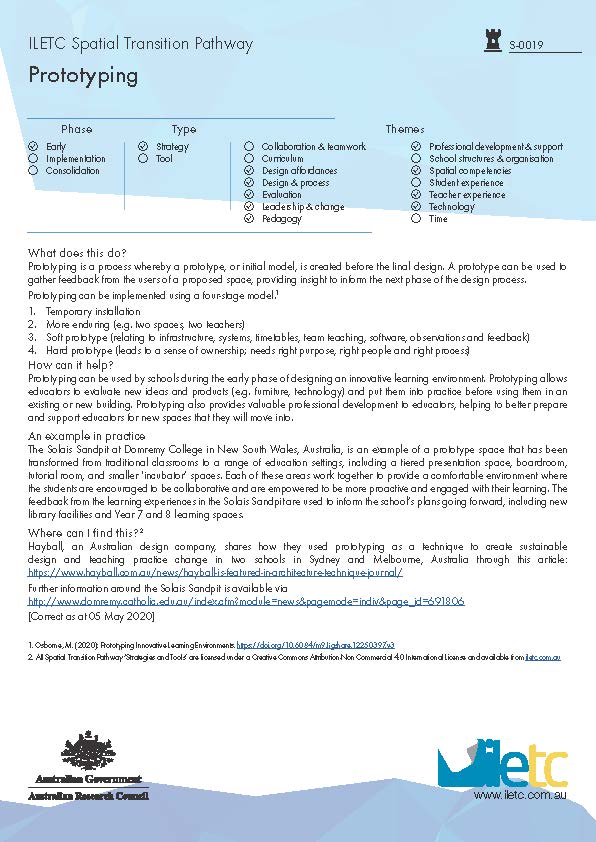| Introduction | Wayfinding activity | Spatial typologies | Spatial transition case studies | Spatial transition resources |
Spatial Transition Pathway
The Spatial Transition Pathway provides a framework for the strategies and tools which support teachers to make the journey of change into innovative learning environments. Strategy is defined as an explicit concept, theory or practice that enhances teachers’ use of innovative learning environments. A tool is an identifiable activity or protocol, that implements a strategy. You can use the database to search for strategies and tools by temporal phase or transition theme(s). If you would like to contribute a strategy or tool, please contact the ILETC team.
Prototyping
Prototyping is a process whereby a prototype, or initial model, is created before the final design. A prototype can be used to gather feedback from the users of a proposed space, providing insight to inform the next phase of the design process.
Prototyping can be implemented using a four-stage model.
- Temporary installation
- More enduring (e.g. two spaces, two teachers)
- Soft prototype (relating to infrastructure, systems, timetables, team teaching, software, observations and feedback)
- Hard prototype (leads to a sense of ownership; needs right purpose, right people and right process)

